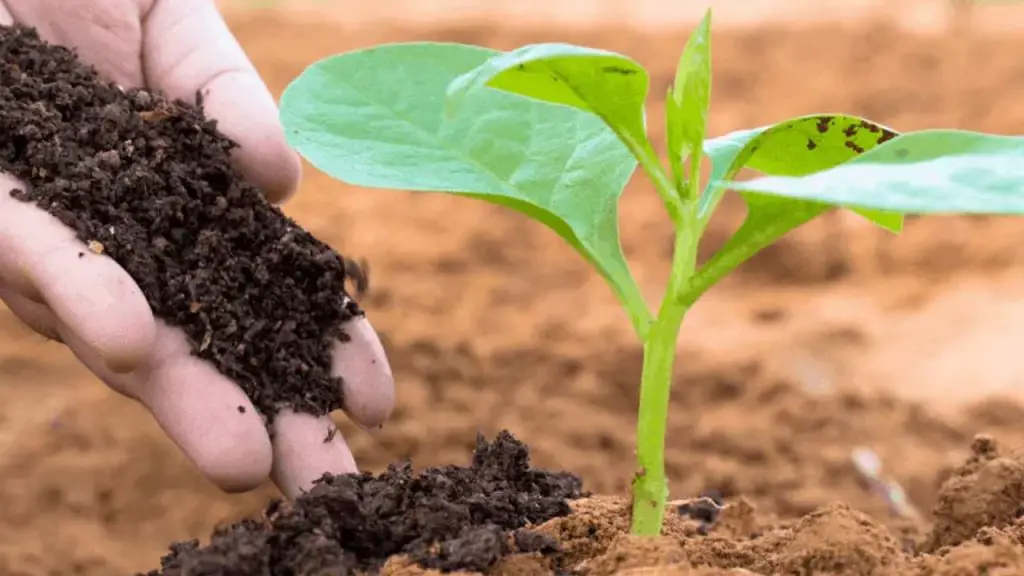Adding nitrogen to soil is a great way to improve the quality of your plants. You can either add nitrogen in its elemental form, as ammonia gas, or in compound form, as nitrate salts. In this blog post, we will show you how to add nitrogen to soil in an easy and affordable way. Stay tuned!
Why Do You Need To Add Nitrogen To The Soil?

Nitrogen is one of the most important nutrients for plants, providing them with the energy they need to grow and thrive.
Without nitrogen, plants would be unable to produce the chlorophyll that gives them their green color, preventing them from carrying out photosynthesis. In addition, nitrogen plays a vital role in the development of strong roots, stems, and leaves.
Because of its importance, gardeners often add nitrogen-rich fertilizers to their soils to ensure that their plants have everything they need to grow healthy and strong.
Adding nitrogen to the soil is especially important when planting crops like corn, which are heavy feeders and require large amounts of nitrogen to produce a good yield.
However, it is also important to use caution when adding nitrogen to the soil, as too much nitrogen can lead to problems like leaf burn and excessive plant growth.
As a result, it is important to follow fertilizer instructions carefully and only add as much nitrogen as your plants need.
Benefits Of Adding Nitrogen To Soil
Nitrogen is an important nutrient for plants, and it plays a vital role in plant growth. Nitrogen is present in the air, but it is not available to plants in this form.
Instead, nitrogen must be converted into a usable form, such as nitrate or ammonium, before it can be taken up by plants. This process is called nitrogen fixation, and it can be performed by bacteria that live in the soil.
The bacteria convert nitrogen gas into nitrate, which is then absorbed by plants. In addition to providing plants with a source of nitrogen, nitrogen-fixing bacteria also help to improve soil fertility.
By adding nitrogen to the soil, these bacteria increase the amount of organic matter in the soil, which improves its ability to hold water and nutrients.
As a result, adding nitrogen to the soil can have a number of benefits for plant growth.
How To Add Nitrogen To Soil: 3 Easiest Ways
There are a number of different methods that can be used to add nitrogen to the soil.
1. Commercial Fertilizers
One of the most common is the use of commercial fertilizers. These products typically contain a high concentration of nitrogen, which can be quickly absorbed by plants. However, fertilizers can also be expensive and may need to be applied more often than other methods.
2. Composting
Another common method for adding nitrogen to soil is composting. Composting involves breaking down organic matter, such as leaves and kitchen scraps, into a nutrient-rich material that can be added to the soil. This process can take several months, but it provides a slow and steady release of nitrogen that can help to promote plant growth.
3. Nitrogen Fixing Plants
Finally, some gardeners choose to add nitrogen-fixing plants to their gardens. These plants, such as clover and alfalfa, improve soil quality by fixing nitrogen from the air into the soil. As a result, they can help to increase the amount of this essential nutrient available to other plants.
How Do You Know If Your Soil Has An Adequate Level Of Nitrogen Already?
The easiest way to tell if your soil has an adequate level of nitrogen is to take a soil sample and have it tested. Most university extension offices will test your soil for free or for a nominal fee. The results of the test will tell you how much nitrogen is currently in the soil and what the optimal range is for the plants you are growing.
You can also use a home test kit, but these are not always accurate. If your plants are yellowing or growth is stunted, that is another sign that your soil might be lacking in nitrogen.
Adding nitrogen to the soil can help promote growth and prevent problems like bottom rot in tomatoes. However, too much nitrogen can also be harmful, so it is important to test your soil and follow the recommendations for adding nitrogen based on the results of the test.
Potential Dangers Or Drawbacks Associated With Adding Nitrogen To Soil
Adding nitrogen to soil can have a number of potential dangers or drawbacks associated with it.
One potential danger is that it can lead to an increase in the growth of certain types of plants, such as weeds. This can be a problem because the increased growth of these plants can crowd out other, more desirable plants.
Another potential danger is that nitrogen can leach out of the soil and into groundwater, contaminating it. In addition, nitrogen can contribute to air pollution, specifically ground-level ozone, which is a pollutant that can be harmful to human health.
Finally, too much nitrogen in the soil can lead to nutrient imbalance, which can cause problems for plants.
While adding nitrogen to soil can have some potential dangers or drawbacks associated with it, these should be considered before making the decision to add nitrogen to your soil.
What Precautions Are Necessary While Adding Nitrogen To Soil?
Nitrogen is an important nutrient for plants, and adding it to soil can help to promote growth. However, it is also a volatile substance that can easily be lost to the atmosphere. As a result, precautions must be taken when applying nitrogen to the soil.
One way to reduce losses is to apply nitrogen in the form of a slow-release fertilizer. This type of fertilizer releases nitrogen slowly over time, allowing plants to use it more efficiently.
Another way to reduce losses is to apply nitrogen during cooler weather. When applied during hot weather, nitrogen can be lost to evaporation.
By taking these precautions, farmers can help to ensure that their crops receive the nutrients they need without losing valuable nitrogen to the atmosphere.
Additional Contents


